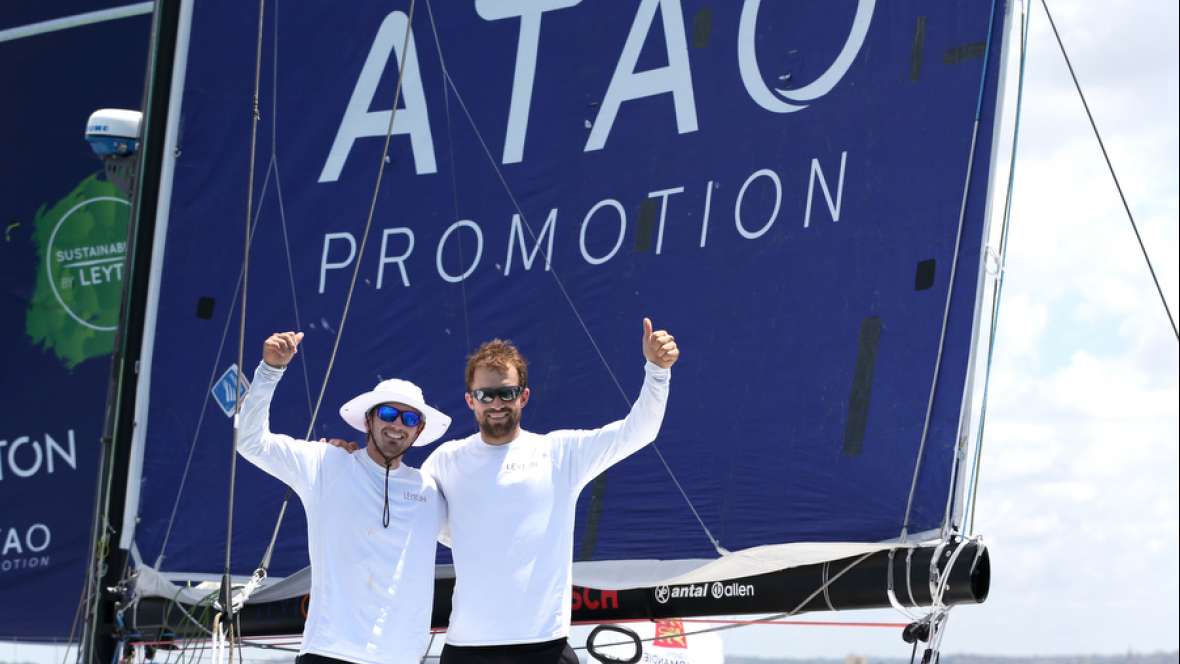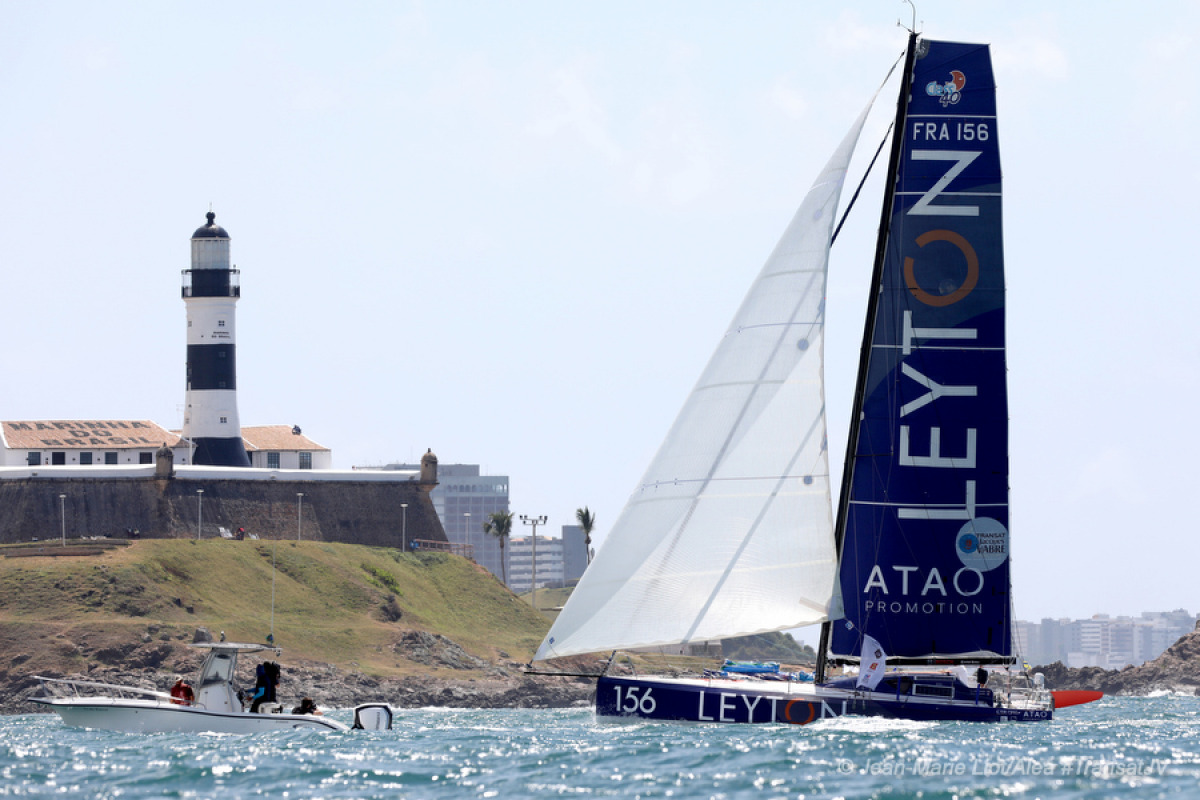The latest race news from the race

© Jean-Marie Liot/Alea
Leyton finishes second in the Transat Jacques Vabre Normandie Le Havre Class40
Sam Goodchild and Fabien Delahaye, on their 40ft monohull, Leyton, have finished second in the Class40 of the 14th edition of the Transat Jacques Vabre Normandie Le Havre after crossing the finish line in the Bay of All Saints in Salvador de Bahia, Brazil on Thursday, November 14, 2019 at 12:58:11 (UTC), 18 days, 0 hours 43 minutes and 11 seconds after leaving Le Havre, Normandy, France on Sunday, October 27 at 12:15 (UTC).
Leyton covered the theoretical course of 4,350 nautical miles at an average speed of 10.05 knots but actually sailed 4,663.32 nautical miles at an average speed of 10.78 knots. It finished 8 hours 21 minutes and 48 seconds behind the winner, Crédit Mutuel.
Sam Goodchild, Leyton’s 29-year-old British skipper (with co-skipper Fabien Delahaye) called it in Le Havre. “The big question is the two new boats, they’re unknowns. There’s one that’s been sailing for two weeks (Banque du Léman, a Manuard mach 4) and one that’s been sailing for two months (Crédit Mutuel),” he said. “The one sailing for two months we’ve been sailing with them and their times are a bit quicker; they haven’t blown us out of the water yet but they’re not going to get worse.”
“Aïna is obviously up there, they should have won it last time, we’ve basically go the same boat as them (a Manuard mach 3). Crédit Mutuel, because they’ve got two very good sailors and a new boat, if they can keep the thing in one piece…They’ve got a big rocker (large raised bow) which doesn’t necessarily make them faster than us but a lot more of an all-rounder. In the training, what we’ve seen is they go through waves a lot better, so if the sea is big they could have an advantage. Lamotte (- Module Creation, who dismasted on the first morning) are up there as well because they know the boat well and they’re two decent sailors. I like to think we’ll be in the mix too.”
One could analyse Leyton’s race to death, but it is hard to avoid the conclusion that Crédit Mutuel, two years newer and with its Mini-inspired scow, was just faster. Lipinski and Hardy knew how to sail it and took an aggressive route north and west, giving them a better angle south when they finally emerged into the trade winds. But Goodchild and Delahaye are perhaps better judged by how they put the same margin between them and Leyton’s sistership, Aïna Enfance & Avenir, in third. No one in the fleet knows their boat better than Aïna’s skipper Aymeric Chappellier. So, to Leyton, great credit – in fact, you will advance your sleep-deprived correspondent some leeway if he ventures - mutual credit to the first two Class40 boats into Salvador.

There were some similarities to the 2017-edition where Britain’s Phil Sharpe on a Manuard mach 2 was gradually dropped by the mach 3’s in front of him.
The race came too early for Banque du Léman, a Manuard mach 4, so that battle of the designers may yet have a postscript. The mach 4 lies somewhere between the mach 3 and the David Raison-designed, Crédit Mutuel.
Before the north-east trade winds, Leyton and Aïna Enfance & Avenir, had been leading, and even when passed both were only nine miles behind Crédit Mutuel as they approached the Canary Islands. But they were both brutally dropped.
On November 6, Leyton was breaking the old 24-hour speed record, the problem was that Crédit Mutuel was averaging a knot and a half more.
Leyton was the one to respond and the deficit was briefly under 50 miles as they exited the Doldrums. Aïna Enfance & Avenir was later into the south-east trade winds and a deficit to Leyton that had rarely gone above 20 miles was suddenly 50 and growing. It was over 70 as they approached Recife. There are fewer overtaking opportunities after the Doldrums and Leyton were as confident in their descent along the north-east coast of Brazil as the boat in front.
The only brief alarm came when they disappeared off the map and rankings on Wednesday, but that was only a fault with the tracker not the skippers.



